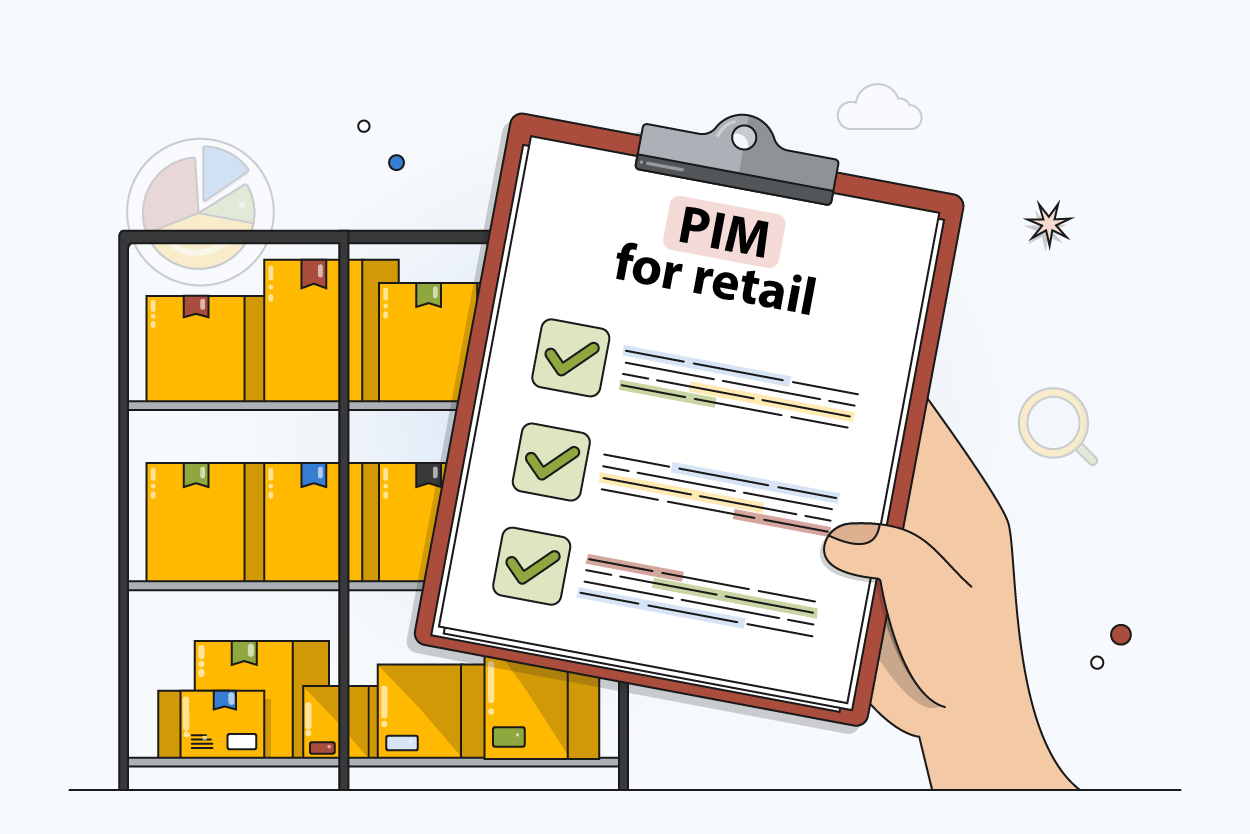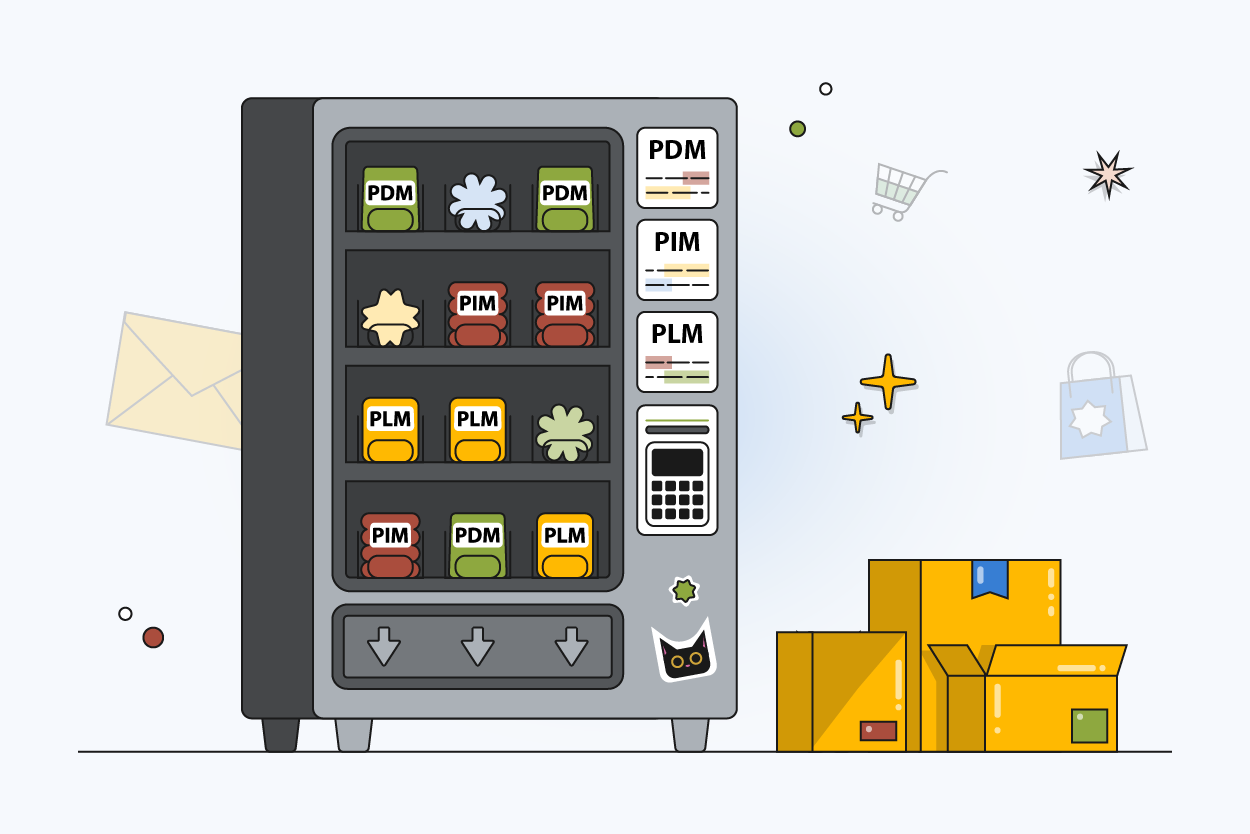What Are Product Attributes in a PIM? Complete Guide
Author name: Mark Chickering

Browse for a laptop online and you'll face thousands of options. What helps you narrow them down? Product attributes - specific details like screen size, RAM, and weight. Understanding how these characteristics work in a Product Information Management system will boost your online sales and improve customer experience.
What Are Product Attributes?
Product attributes are the tangible and intangible characteristics of a product. They provide objective technical details without marketing spin, helping online shoppers find, compare, and choose products that meet their needs.
Shopping for a handbag with multiple compartments? You'll find thousands claiming to fit that description. Product attributes cut through the noise — one bag has three compartments, another has five. That objective number drives the purchase decision.
In a PIM system, attributes power your entire product catalog. They drive search filters, enable comparisons, and help your target audience find the right products quickly.
Attributes differ from marketing descriptions in one crucial way. Descriptions paint pictures — "Sleek design perfect for professionals." Attributes provide facts - screen size: 15 inches, weight: 1.8kg, RAM: 16GB. When customers filter by "weight: under 2kg," they rely on accurate product characteristics, not marketing copy.
Understanding Different Types of Product Attributes
Product attributes split into two categories, each serving different purposes in customer decision-making.
Tangible Product Attributes
Tangible attributes are physical characteristics customers can measure or observe. These concrete specifications define a product's physical presence and capabilities.
Take a laptop. Tangible attributes include screen size (15.6 inches), weight (1.8 kilograms), color (space gray or silver), RAM (16GB), and USB ports (three). Each detail answers a specific customer question: Will this fit in my backpack? Can I carry it all day? Does it have enough power for video editing?
Physical product characteristics directly impact daily use. Shirt size determines fit. Suitcase weight affects whether you can lift it into overhead compartments. Technical specifications like processor speed or battery capacity define what tasks a device handles. This information prevents returns and ensures satisfaction.
Intangible Product Attributes
Intangible attributes cover non-physical traits that influence buying decisions. These include brand reputation, warranty coverage, customer reviews, certifications, awards, and country of origin.
Why pay more for a branded product when a generic alternative offers similar specifications? Intangible attributes provide the answer. A two-year warranty gives peace of mind. Customer reviews offer social proof of positive experiences. ISO certifications signal quality control.
For many products, intangible attributes prove as decisive as tangible ones. Customers might choose a heavier laptop because they trust the brand, value superior support, or need industry certifications. Managing attributes of a product means capturing both types—miss the intangible, and you miss crucial decision factors for your target audience.
The Role of Product Attributes in Customer Decision-Making
Every purchase involves customers weighing factors to find the best match. Product attributes provide the concrete information that turns browsing into buying.
Shoppers landing on your pages ask specific questions: Does this come in my size? Will it work with my existing equipment? Is my preferred color available? Can I afford it? Product characteristics answer these instantly through filters and specifications.
Search for wireless headphones with noise cancellation under $150. You're filtering by three attributes: connectivity type, features, and price. If a product lacks any of these in your system, it becomes invisible to that customer—even if it's perfect otherwise. This is where effective product information management maximizes visibility and conversions.
Customers rarely view products alone — they compare multiple options side by side. Clear, consistent product characteristics make these comparisons straightforward and trustworthy. When technical specifications are missing or inconsistent across your product catalog, customers lose confidence and abandon their search.
Complete product attributes also reduce return rates. Order a desk and receive precisely the dimensions, material, and color expected? Satisfaction soars. Discover it's particle board instead of solid wood, or three inches shorter than needed? That triggers disappointment, returns, and negative reviews.
Why Product Attributes Matter for Your Business
Product attributes impact multiple aspects of your operations, starting with product discovery.
Research shows 62% of online shoppers consider website filtering and search tools essential for their shopping experience. Products with complete, accurate characteristics appear in significantly more filtered results than those with sparse information.
Customer experience improves when shoppers easily find products, compare options confidently, and make informed decisions without contacting support. This smooth journey builds loyalty and encourages repeat purchases. Hussmann Corporation transformed their parts business by implementing category-specific filtering and competitor compatibility tracking through PIMinto, enabling customers to find the exact replacement parts they need.
Search engine optimization benefits from robust product attributes. Search engines use these characteristics to understand, categorize, and rank your products. Structured attribute data feeds into rich snippets, product schema, and Google Shopping listings. Products with comprehensive attributes consistently rank higher than competitors with minimal information, particularly for long-tail searches specifying exact characteristics.
Multi-channel consistency becomes manageable only with properly managed attributes. Selling through your website, Amazon, social media, and physical stores simultaneously? Maintaining consistent product information across every sales channel turns chaotic without centralization. A PIM ensures updates to any attribute automatically sync everywhere, preventing confusion from conflicting information.
Ready to Implement PIM for Better Attribute Management?
You understand why product attributes matter. Now discover the step-by-step roadmap for implementing a PIM system that centralizes your attributes, automates updates, and syncs across all channels.
Product Attributes Across Different Industries
Different categories require different attributes because customer priorities vary across industries.
Fashion and apparel businesses depend on size information. Beyond basic measurements, this category demands fit descriptions (slim, regular, relaxed), material composition percentages, care instructions, and comprehensive color options. Customers shopping for clothes need to visualize how items fit their bodies and match existing wardrobes. See how leading platforms handle these attributes at the top 10 best online fashion marketplaces.
Electronics and technology products require extensive technical specifications. Processor types, RAM capacity, storage size, screen resolution, battery life, connectivity options, and compatibility information all influence decisions. Tech-savvy shoppers filter aggressively by these specifications, knowing exactly what they need. Missing even one key attribute eliminates your product from consideration.
Furniture and home goods depend heavily on dimensions and materials. Shopping for a sofa means needing exact measurements to ensure it fits through doorways and in the living room. Material information (genuine leather versus faux, solid wood versus veneer) affects aesthetic preferences and budget. Weight capacity, assembly requirements, and style categories help customers narrow options.
Food and beverage products face strict regulatory requirements. Ingredient lists, nutritional information, allergen warnings, serving sizes, and expiration dates aren't optional—they're legally required. Beyond compliance, certifications like organic, non-GMO, kosher, or halal serve as crucial decision factors for particular customer segments who filter specifically for these characteristics.
Automotive parts present unique compatibility challenges. Year, make, and model compatibility determine whether a part will work. Part numbers, material specifications, warranty coverage, and installation requirements complete the picture. Without precise compatibility information, customers risk ordering parts that won't fit.
The common thread? Market research into your target audience reveals which product characteristics matter most, allowing you to prioritize attribute collection and maintenance.
Creating Effective Product Attributes
Defining attributes that drive conversions requires strategy beyond listing every detail.
Start by understanding your target audience. Who are they? What problems are they solving? What questions keep them from clicking "buy now"? Market research, customer interviews, and support ticket analysis reveal information gaps creating hesitation. Know what customers care about most, and prioritize those specific attributes.
Not every attribute carries equal weight. Essential characteristics like size, color, and price are non-negotiable—products without these basics become invisible to shoppers. Enhanced attributes like material details, technical specifications, and warranty information add value and help products stand out. Optional attributes provide details that might tip the balance for some customers but aren't universal necessities.
Consistency in naming matters. When one product lists "Screen Size" and another shows "Display" or "Monitor Size" for the same attribute, customers struggle to compare. Your PIM system should enforce standardized naming conventions across your entire product catalog.
Product attributes in marketing benefit from connecting features to benefits. Rather than stating "1200 DPI optical sensor," explain that this enables "precision tracking for accurate cursor control." This helps customers understand why a characteristic matters, especially for technical specifications that might otherwise seem like meaningless numbers.
Search optimization for attributes requires thinking like your customers. What terms do they use when searching? Industry jargon might be precise but unhelpful if your target audience searches using different language. Including common synonyms in your attribute structure improves discoverability.
Testing and refinement should continue. Analytics reveal which attributes customers actually use when filtering and searching. Conversion rates by attribute completeness show where investing in detailed information pays off. A/B testing different presentations can uncover insights about what information customers value most.
Managing Product Attributes with PIM Systems
Handling product characteristics across hundreds or thousands of items without proper tools creates chaos. Spreadsheets multiply, information gets duplicated inconsistently, and synchronization becomes overwhelming.
Product information management systems centralize all attribute data in one source. Update a product's weight or add a new color variant, and that change propagates automatically to every channel where you sell. This eliminates version control problems where nobody knows which file contains current information.
The real power shows up in handling category-specific attributes. Electronics need different characteristics than furniture, which differ from food products. A sophisticated PIM like PIMinto lets you define attribute sets by category, ensuring each product type includes relevant fields without cluttering interfaces with irrelevant options. This makes data entry faster and more accurate while improving customer experience through better filtering.
Compound attributes handle situations where multiple related pieces of information combine meaningfully. Dimensions exemplify this—length, width, and height together describe size more usefully than three separate, unconnected numbers. Grouping related attributes keeps your product catalog organized and easier to navigate.
Access control becomes important as teams grow. Marketing needs to edit descriptions and images, while only certain users should modify pricing or technical specifications. PIM systems let you grant appropriate permissions, protecting data quality by preventing accidental changes while enabling necessary collaboration.
The efficiency gains are substantial. Tasks that took hours with manual processes—updating prices across multiple channels or adding new attributes to entire product lines—become minutes-long operations. This time savings lets your team focus on strategic work rather than tedious data entry.
Product Attributes for B2B: Best Practices & Real Examples
B2B ecommerce requires different attribute strategies than B2C. See practical examples and proven approaches for managing technical specifications, bulk pricing, and compatibility data.
Common Mistakes to Avoid
Businesses frequently stumble in specific ways when managing product attributes.
Too few attributes ranks as the most common mistake. List only basic information — name, price, maybe an image — and you're hiding products from customers who filter by characteristics you've omitted. Every missing attribute represents lost sales from shoppers who would have been perfect matches.
Inconsistent naming conventions create comparison nightmares. When sizing appears as "Large," "L," "Size L," and "Large (L)" across different products, filter systems break down and customers lose confidence. Standardization seems tedious but pays dividends in usability and trust.
Neglecting intangible attributes means missing emotional drivers. While size and technical specifications matter, warranty coverage, customer reviews, certifications, and brand story influence decisions powerfully. Treating these characteristics as afterthoughts leaves value on the table.
Failing to update attributes as products change leads to disappointed customers and increased returns. When specifications change with new manufacturing runs, discontinued colors, or updated features, your product catalog must reflect current reality. Stale information damages trust.
Ignoring SEO opportunities in attribute structure wastes potential traffic. Product characteristics should incorporate keywords customers actually use when searching, not just internal terminology or manufacturer jargon. This optimization helps both on-site search and external search engines connect customers with relevant products.
Making Product Attributes Work for Your Business
Product attributes are more than data entry — they're the foundation of effective product discovery, meaningful comparison, and confident purchase decisions. When managed properly through robust product information management systems, these characteristics transform your entire customer experience.
Businesses that thrive in competitive online sales environments recognize attributes as strategic assets deserving careful attention. Complete, accurate, well-organized product characteristics separate professional operations from amateur ones, directly impacting conversion rates, return rates, and customer satisfaction.
Start by understanding your target audience's needs through market research, then build comprehensive attribute strategies that serve those needs. This creates sustainable competitive advantages. The investment in proper systems and processes pays for itself through increased efficiency, better customer experience, and improved sales performance.
While other PIM systems can feel over-engineered, PIMinto focuses on speed and clarity. From fast implementation to intuitive attribute sets, it’s built to scale with your catalog without slowing your team down. That makes it a smarter fit for businesses that want results today, not after months of setup.
Ready to Simplify Product Attribute Management?
See how PIMinto streamlines attribute management for your entire product catalog.
Modified on: 2023-06-19



